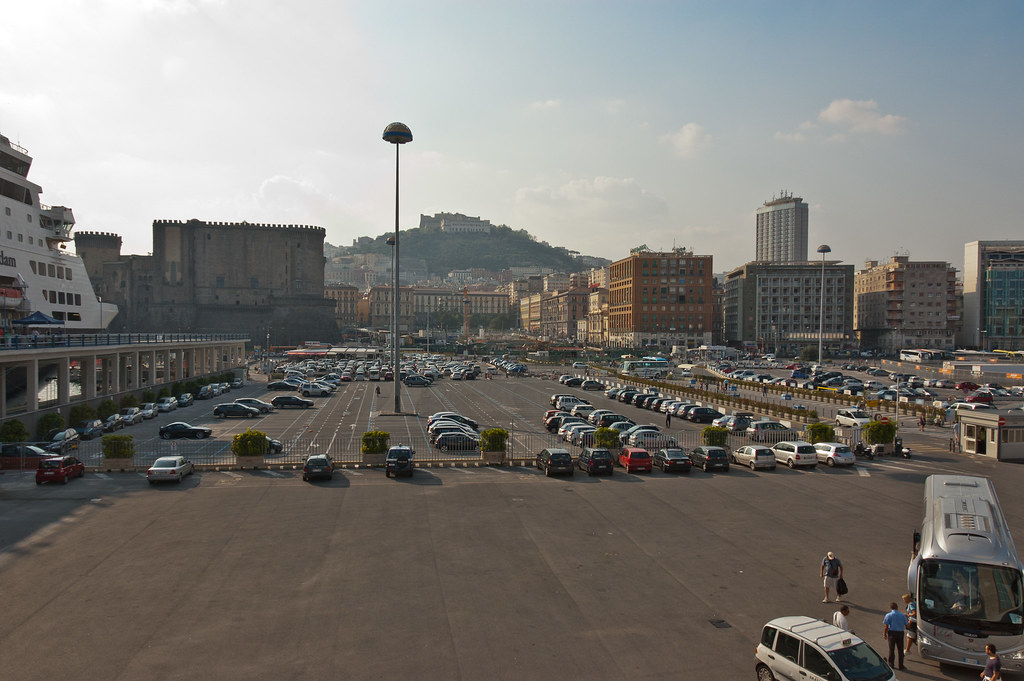
Above: The view of Naples from the cruise terminal.
Unfortunately I did not have time to explore Naples, only dashing through to reach the train station (further away than I thought!) which would take me to Pompeii. I apologise in advance for the slightly vague nature of some of my captions - I decided to take in the atmosphere rather than have my nose stuck in a guide book:

Above: The Temple of Jupiter in the Forum at Pompeii with Mount Vesuvius looming in the distance.
The city of Pompeii is a partially buried Roman town which was partly destroyed under 4 to 6 metres of ash and pumice in the eruption of Mount Vesuvius on 24th August AD 79. Pompeii was lost for nearly 1700 years before its rediscovery in 1748. Since then, its excavation has provided an extraordinarily detailed insight into the life of a city during the Pax Romana. Today, this UNESCO World Heritage Site is one of the most popular tourist attractions of Italy, with approximately 2,500,000 visitors every year.
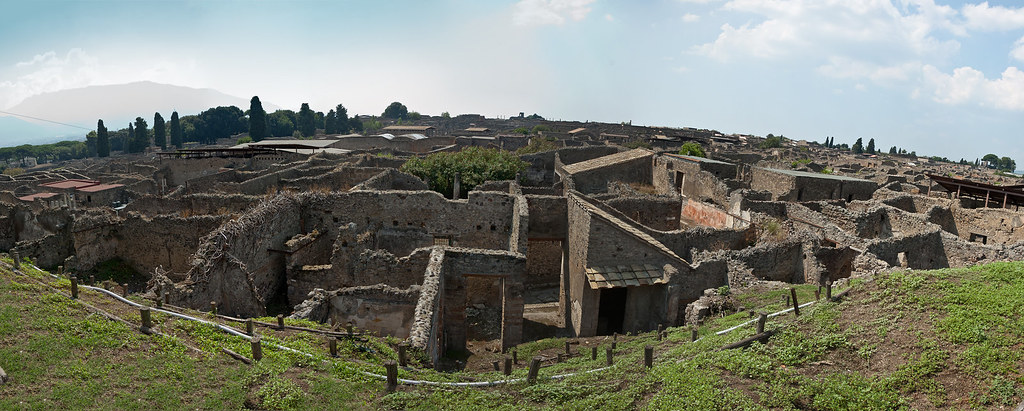
Above: An overview of buildings and streets in Pompeii. The modern roofs are erected to protect paintings from direct sunlight.
For once, I travelled to Pompeii independently (i.e. not on a free shore excursion!) I took the train out of Naples for about 30 minutes to the Circumvesuviana stop, a minute's walk from the entrance to Pompeii. The trains themselves were an experience - fairly run-down and with lots of small boys walking through the carriages playing accordions, looking for tips.
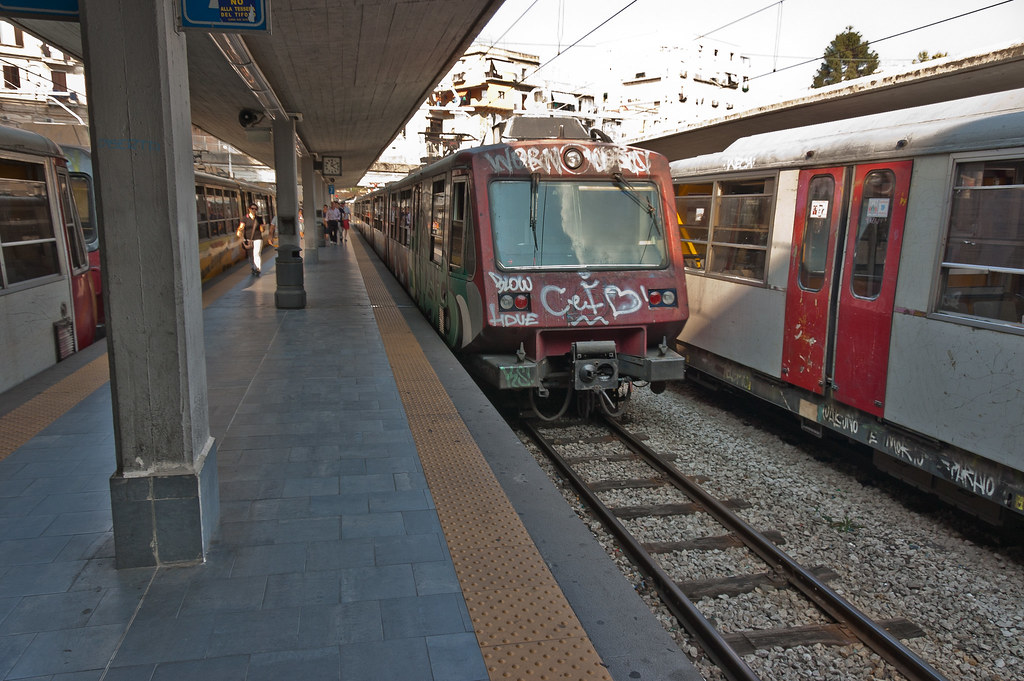
Above: Naples Central train station.
Once I got to Pompeii, the initial experience was quite overwhelming especially when one considers what an extraordinary snapshot of Roman life in the 1st century Pompeii provides. At the time of the eruption, the town may have had some 20,000 inhabitants, and had reached its high point in society, as many Romans frequently visited Pompeii on holiday. The forum, the baths, an amphitheatre and many houses remain well preserved. At the time of eruption, Pompeii also boasted a palaestra with a central natatorium or swimming pool, and an aqueduct that provided water for more than 25 street fountains, at least four public baths, and a large number of private houses and businesses.

Above: A typical Pompeii street.
Pompeii's streets are straight and laid out in a grid in the Roman tradition; they are laid with polygonal stones, and have houses and shops on both sides of the street. Today, many of the streets are closed to the public with less than a third of all buildings open in the 1960s being available for public viewing today. Nevertheless, the sections of the ancient city open to the public are extensive, and you could easily spend several days exploring the whole site.

Above: Amphitheatre of Pompeii.
The amphitheatre has been cited by modern scholars as a model of sophisticated design, particularly in the area of crowd control. It is quite a large structure and one can imagine the activities hosted here being similar to those of the Coliseum in Rome.

Above: One of the entrances to the amphitheatre.

Above: Inside the amphitheatre.
One of the biggest draws in Pompeii are the poignant plaster casts of the dead Romans - killed not by the lava, but by the intense heat and fumes that rushed through the streets before the lava engulfed them. The archaeologist Giovanni Fiorelli arrived in 1860 and he perfected the art of pouring plaster into the lava cavities formed by the corpses to create the human casts. There is even a cast of a pet dog on display.
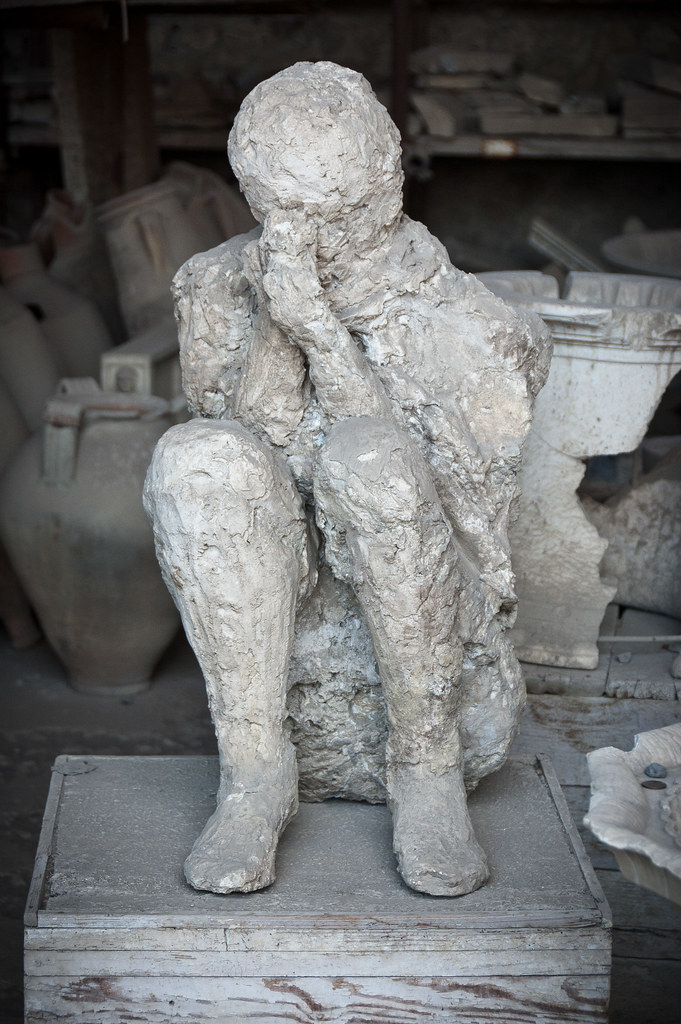
Above: One of many casts that tell the tragic human story of the eruption.
In a nutshell, the human element is what makes the Pompeii story so eternally compelling and the many murals and frescoes on display are another part of that. These images provide information on everyday life and have been a major advance in art history of the ancient world.
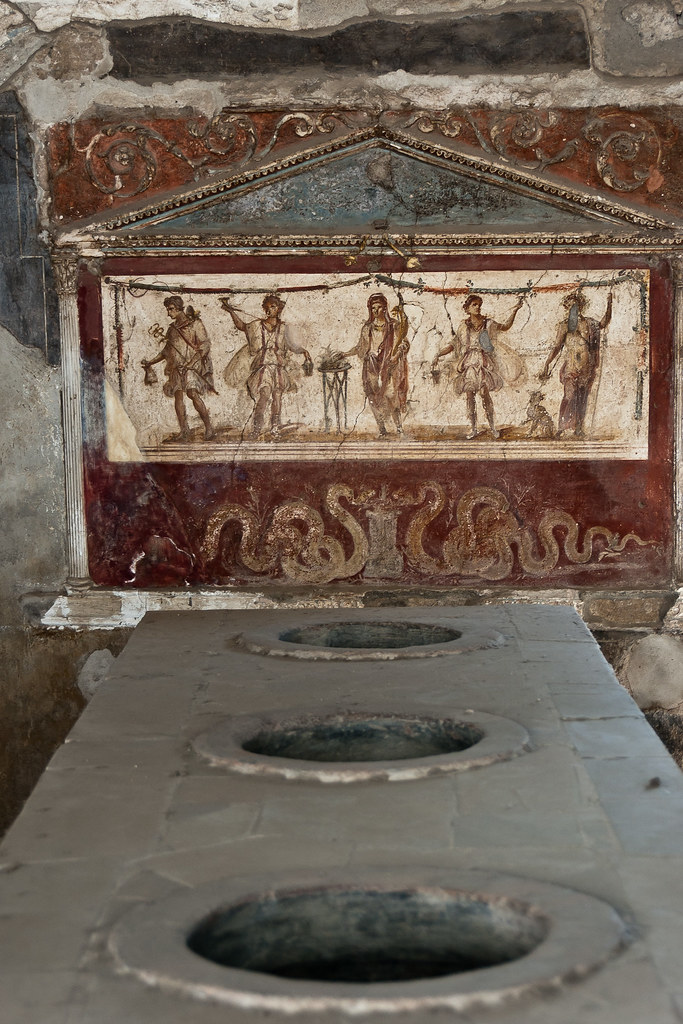
Above: One of the many frescoes found throughout Pompeii. The surface with holes in the foreground was a counter for a bar/restaurant.
Some aspects of the culture were distinctly erotic, including phallic worship; a large collection of erotic votive objects and frescoes were found at Pompeii. Many were removed and kept until recently in a secret collection at the University of Naples. Others were re-buried upon discovery, due to the strict modesty of the 19th century (some people even invoked the destruction of Pompeii as divine retribution for its liberal lifestyle).
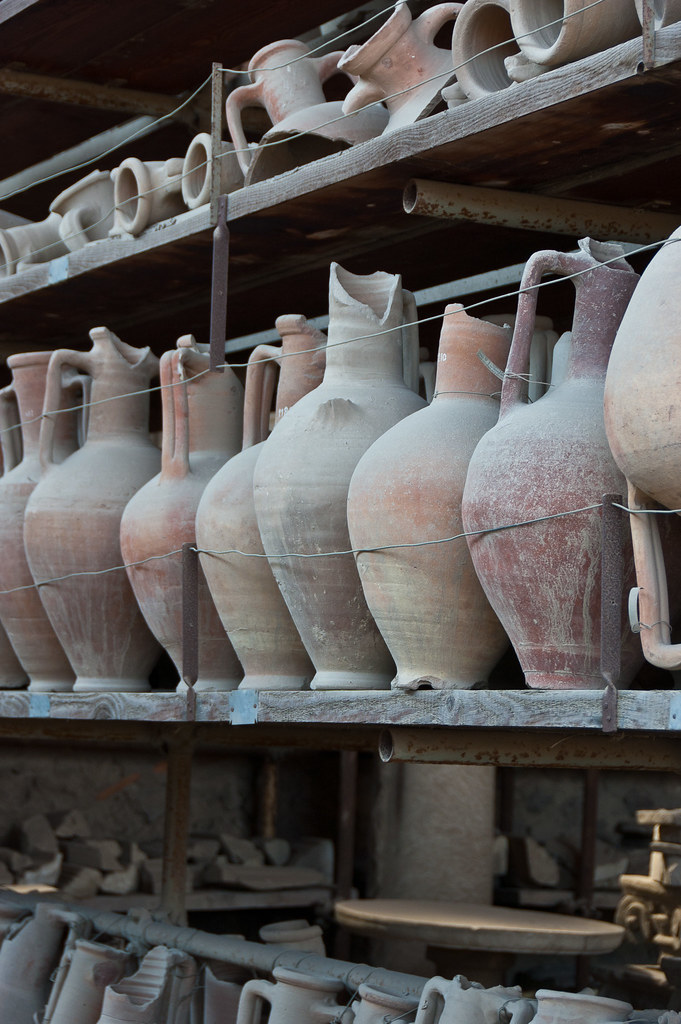
Above: Large collections of pottery fill the buildings by the side of the forum.
It is interesting to note that on 5 February 62 AD, there was a severe earthquake which did considerable damage to Pompeii. Chaos followed the earthquake and it is believed that almost all buildings in the city of Pompeii were affected, with fires - caused by oil lamps that had fallen - adding to the damage. In the days after the earthquake, anarchy ruled the city, where theft and starvation plagued the survivors. In the time between 62 and the eruption in 79, some rebuilding was done, but some of the damage had still not been repaired at the time of the eruption.
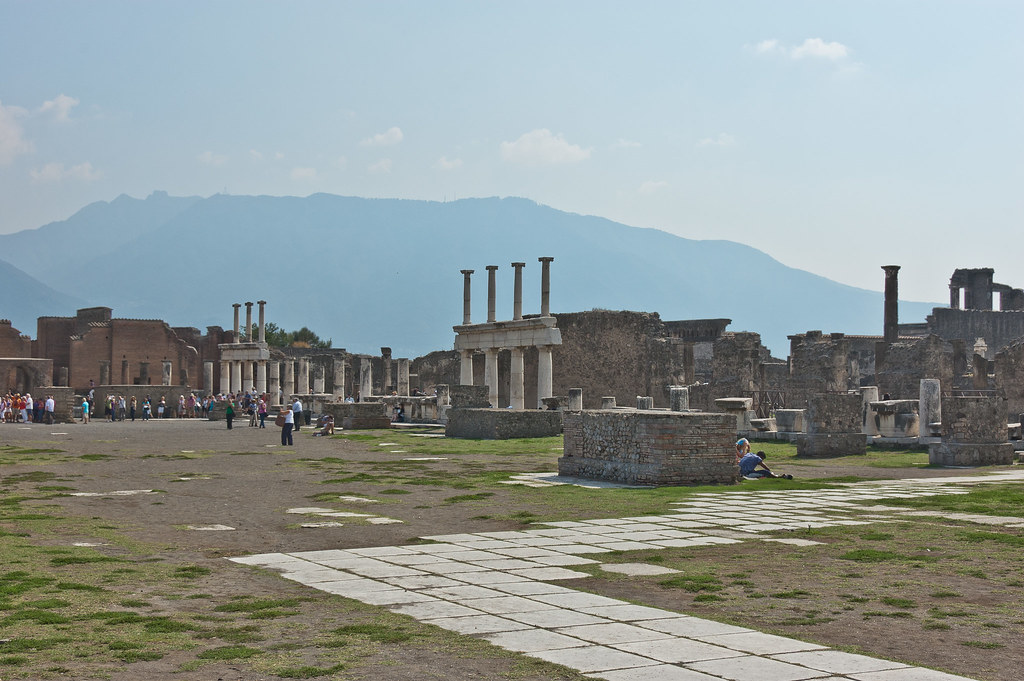
Above: The forum at Pompeii, the centre of public and the site of processions and elections, venue for public speeches, criminal trials, and gladiatorial matches.
Besides the forum, many other services were found upon excavation: the Macellum (great food market), the Pistrinum (mill), the Thermopolium (sort of bar that served cold and hot beverages), and cauponae (small restaurants). As well as the amphitheatre mentioned above, two theatres have also been found, along with a palaestra or gymnasium.

Above: One of the smaller theatres at Pompeii.
The aqueduct system was very sophisticated and an example of brilliant Roman engineering. It branched out through three main pipes from the Castellum Aquae, where the waters were collected before being distributed to the city; in case of extreme drought, the water supply would first fail to reach the public baths (the least vital service), then private houses and businesses, and when there would be no water flow at all, the system would fail to supply the public fountains (the most vital service) in the streets of Pompeii.
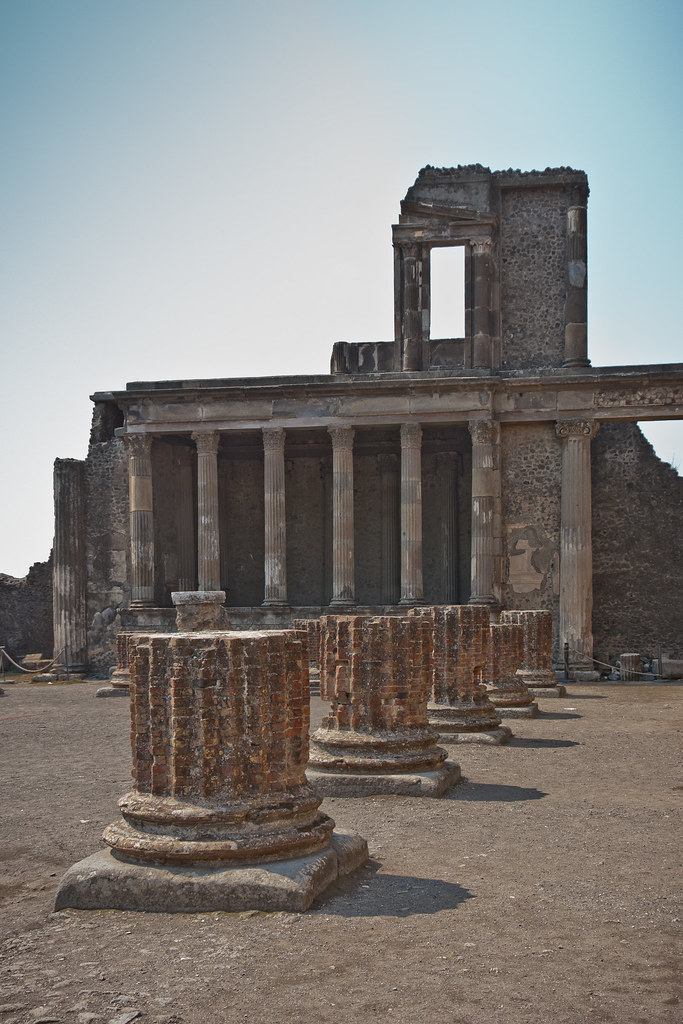
Above: Temple of Apollo.
Pompeii was an important town for two reasons. First, it was a leading manufacturer of garum, a disgusting-sounding but extremely popular mash of salted fish intestines left to ferment in the sun for months. Second, just across the Bay of Naples, lay the crucial naval base of Misnum. The fame of the eruption was boosted by the man in charge of the base on that fatal August day: the philosopher Pliny the Elder.

Above: Remarkably well preserved statues.
In one of the many tragedies that enshrine Pompeii's immortality, curious Pliny the Elder sped towards Vesuvius on a boat as soon as he saw it erupt, while his cautious 18-year-old nephew, Pliny the Younger, stayed behind to read. In a letter to a friend, Pliny the Younger noticed the chilling shape of the cloud over Vesuvius: 'Like an umbrella pine, it rose to a great height on a kind of trunk and then split into branches.'
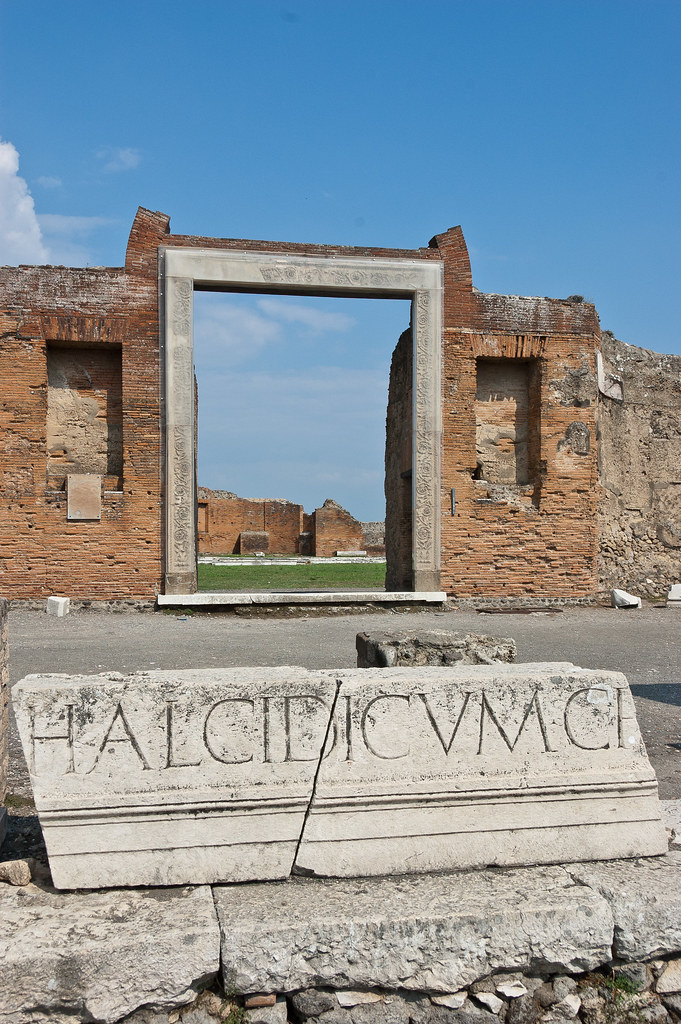
Above: The entrance to a grand courtyard.
Pliny the Younger's account of his uncle's death sends a shiver down the spine. As ash, pumice and blackened cracked stones darkened the sky, Pliny the Elder fled to the seashore, where he was overcome by the sulphurous fumes: 'He stood, leaning on two slaves, and then collapsed suddenly. When dawn returned, his body was discovered intact and uninjured, still fully clothed and looking more like sleep than death'.
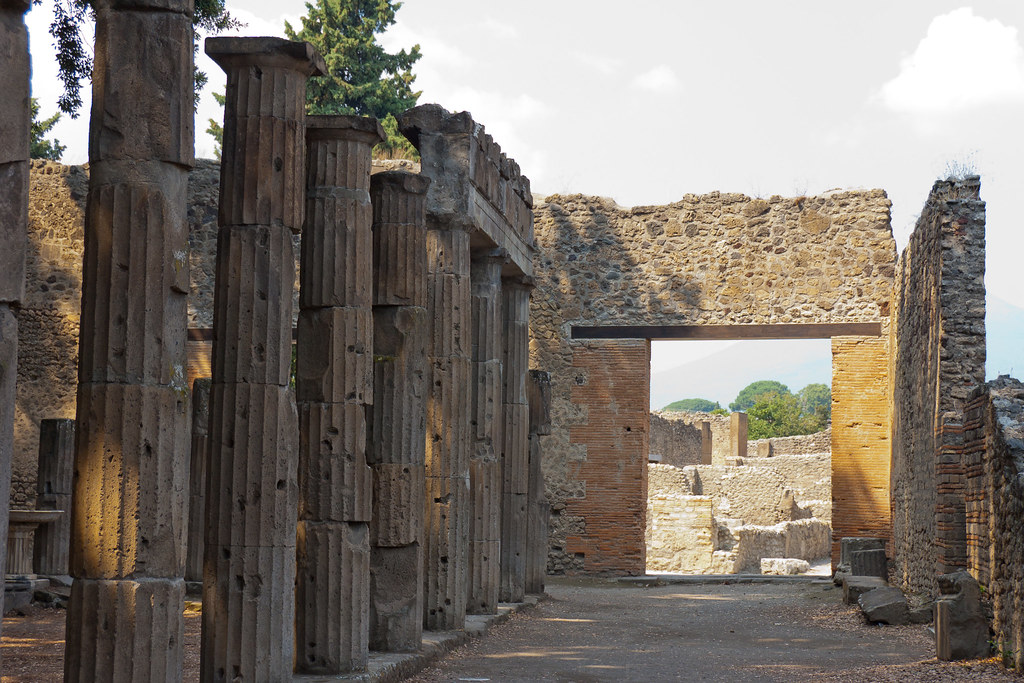
Above: More columns near one of the small theatres.
The results of a study, published in 2010, show that in Vesuvius and surrounding towns heat was in fact the main cause of death of people, previously believed to have died by ash suffocation. The study showed that exposure to at least 250 °C hot surges at a distance of 10 kilometres from the vent was sufficient to cause instant death, even if people were sheltered within buildings.
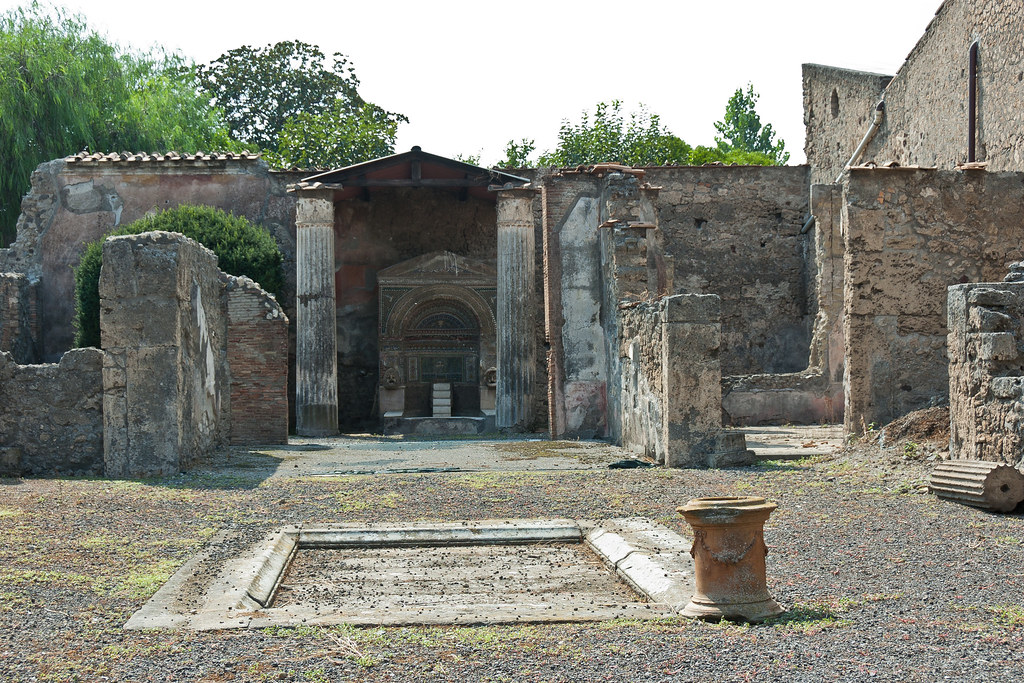
Above: The courtyard of a minor temple.
Pliny's fate may wait modern Neapolitans as Vesuvius often goes for decades without erupting. It last erupted in 1944 and scientists - who estimate that there is a 400-square-kilometre reservoir of magma five miles below the ground under Vesuvius - say that it is due another eruption soon.

Above: Posing at the main forum.
I hope you enjoyed this glimpse of Pompeii. It is certainly worth a visit and if I return, I would also like to ride the 4x4s up to the rim of Vesuvius to glimpse the fiery innards of the infamous volcano. At last, I have come to the end of my 40 or so posts from Europe, and I'm excited to move onto Australia and Asia - coming very soon! Thanks for reading.

No comments:
Post a Comment